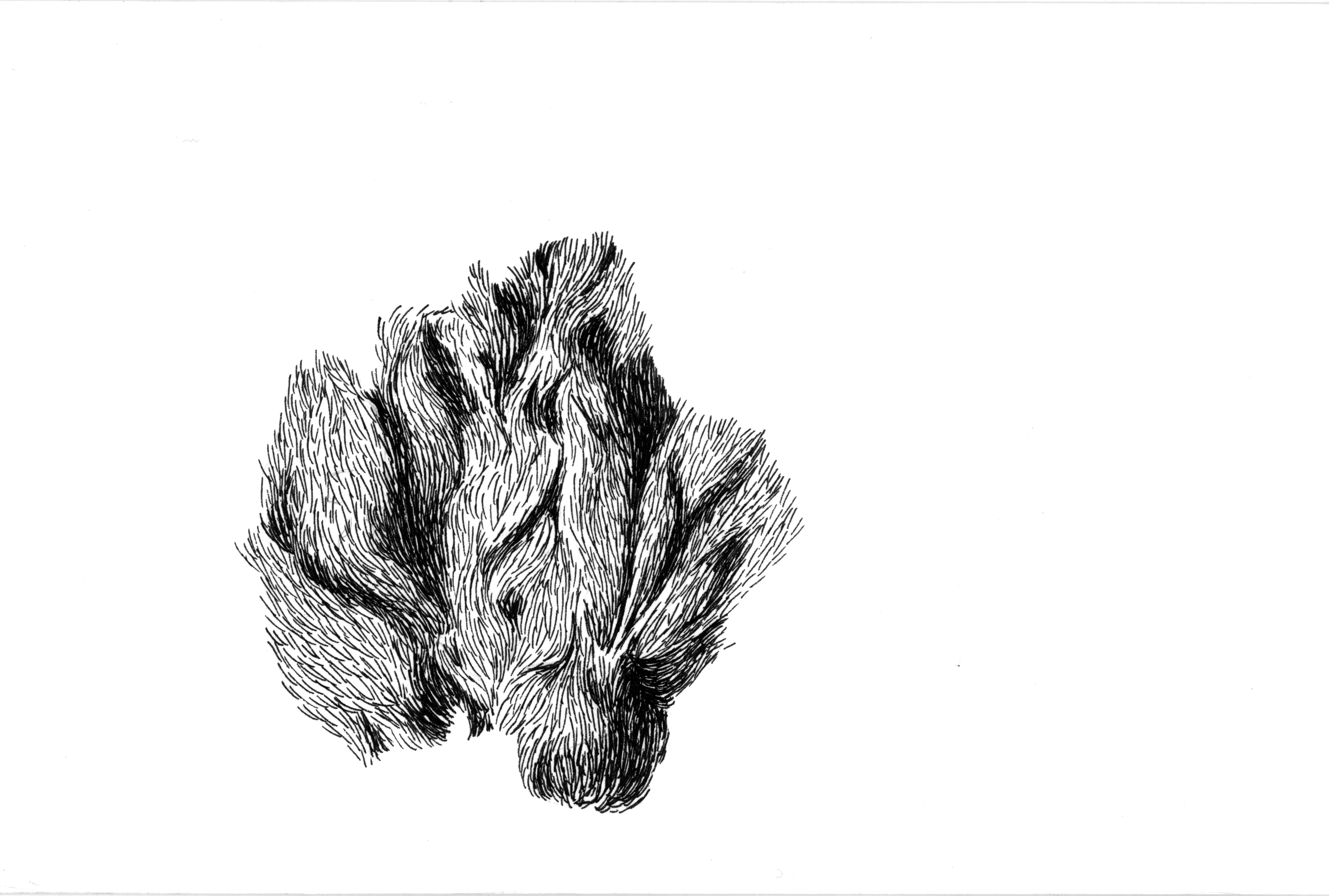Shortly before his death, Descartes receives a letter from the just 17-year-old Spinoza, in which only a single sentence can be read: "Complico, ergo sum" – "I fold, therefore I am". Like the philosopher folds concepts, the artist folds gestures of lines and strokes, she folds the simple landscape into the complicated entity as humans are. Nature is the twofold that never allows itself and ourselves to be one. Only in moments of the most focused concentration – graphic lightning on the infinite folds of being – something of this lessness seems to take shape. At the same time, the viewer's gaze, his desire, is directed at the same nonsensical meadows, fields, dunes, forests, meaningless insofar as their teeming masses simply are pointless. Their insatiable folds plunge our eyes into despair on account of the incomprehensibility of the sight, a veil of tears – semi-transparent linen – protects us from the immediate. But like ink, it seeps through from behind, as if all scribbling and writing were the negative of that which cannot be put on paper. The hand is thus the tool of an unstoppable movement that drags the eye along with it and lets it plunge through the endless scribbles into a grayish abyss. Hegel once wrote that what one could not draw, no line should ever touch. But the graphic madness, which is always moussing, is deeply convinced of the opposite: only the lessness, the getting out of hand of the ephemeral, is worthy of the line. They who dedicates themselves becomes evidence.
Christian Drieser
